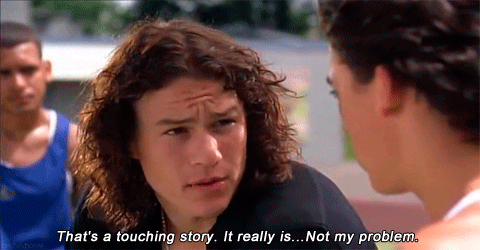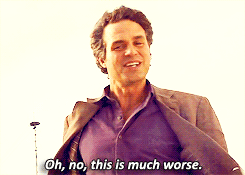An Indigenous Peoples’ History of the United States is a read for Nonfiction November, hosted by the marvelous Kim (Sophisticated Dorkiness), Leslie (Regular Rumination), Katie (Doing Dewey), and Rebecca (I’m Lost in Books). Rebecca’s the host for this week, so head on over to her blog to see the nonfiction other bloggers have been reading and recommending!
My American history memory is in a parlous state, mostly because I have never been terribly interested in it. But I am VERY VERY interested in colonial powers and the ways they do colonialism, so I was eager to pick up Roxane Dunbar-Ortiz’s An Indigenous Peoples’ History of the United States, published by my much-beloved Beacon Press. It isn’t a history of the indigenous peoples of the US, but rather a history of the US happening to indigenous peoples.
I had to read this book one chapter per day, because otherwise I got too sad about it. Because basically here is the history of the US happening to indigenous people:
Stage 1: Various colonizing groups got to America and made treaties with the Indian nations they encountered. The colonizers despised the Indians and cheated them blind, but they acknowledged that the Indian groups were sovereign nations who got to America ahead of them.
(There were some massacres during this stage. Sometimes Indians massacred colonists, and sometimes colonists massacred Indians. Bad times all around.)
Stage 2: The USA got founded, and it made some treaties with Indian groups about where the United States ended and the Indian lands began. When American settlers settled on Indian land, and the Indians said, “Hey!”, the US government would most of the time just be like:

Because they would claim that the settlers were acting without the permission of the US government. But if the Indians attacked the settlers, the government would be like “Nooooo! The savages are attacking Americans!” and they would send out the army to burn down the Indian villages and redraw the treaty lines (often by getting some random Indian to sign the treaty and then be like “Okay! Now it counts for all people in your tribe!” even though the person who signed wasn’t actually authorized to speak for that tribe). And so on ad infinitum.
(There were massacres at this stage also. You should just always assume there are massacres going on. Also, the Trail of Tears.)
As I was reading about Stage 2, I was thinking, Oh yeah, this is what the Wilders were doing probably. This was the Laura Ingalls Wilders, settling on Indian land that actually really belonged to the Indians by treaty. Boy, the Ingalls family was not on the right side of history.
But man, if I thought Stage 2 was miserably depressing, I was not emotionally prepared for Stage 3. (Like, I knew it was coming, but I just really didn’t want it to.)
Stage 3: The US government got tired of paying lip service to the idea that they were ever going to honor their treaties with the Indians, I guess because redrawing the treaties all the time was creating too much paperwork for them or something. They announced that Indians weren’t sovereign nations after all, nor did Indian tribes have any legal significance as a unit. All Indians from now on would be considered as individuals (not members of a tribe) and would be wards of the state.

Yes it is. The Ingalls family was around during this bit, as well. They bridged the gap between Stage 2 and Stage 3. I’m not harping on it to make you feel guilty about liking those books; it’s just what I kept thinking about as I was reading. I got too depressed in this stage to take in some of the information coming my way. I was just thinking, Ugh, ugh, ugh, please stop it, America, you are the worst.
Stage 4: Hooray! A beacon of light at last! Y’all, I got so used to the story being about America using superior weapons and weapons to kill Indians and steal their land that I forgot anything else was ever going to happen. Stage 4 is the civil rights stage! Although Indian activist groups campaigned for a lot of things they didn’t end up getting, there were some things they did end up getting, including the occasional admission by the US government that they had been treating the Indians badly all these years.
If you are currently thinking, Jenny’s a colonialist asshole for being excited about the US government doing the absolute bare minimum of what it damn well should have been doing all along, I can’t argue with you. But y’all, Stages 2 and 3 were really rough. Dunbar-Ortiz talks about the massacre at Wounded Knee (often considered the end of Indian resistance in the United States), and really, any time you’ve got pictures of mass graves containing children, you’ll take no massacres + small shitty government concessions as a major win.
Overall: I didn’t learn a ton of information that I didn’t already know, at least in hazy outline. Dunbar-Ortiz is talking about patterns, not specifics, for much of this book, and we already know the general outlines of how European-American colonizers wiped out as many Indian tribes as they could over the course of a few centuries. However, I think it’s really important and valuable tTo see it laid out all in one place, as an integral part of the development of the country. I wrote down a ton of books from the bibliography, and I’m hoping to read more indigenous histories of America in the future.
Important takeaway: We gotta get Andrew Jackson of the $20 bill. I have been saying this for ages, but now I think so even more. It is insane and insulting that we have him on there. Let’s replace his face on the twenty with somebody whose policies didn’t kill quite so many people. I vote for Harriet Tubman. Nobody can argue with Harriet Tubman; partly because she is an awesome heroine from history, and partly because she is way tougher than you and would definitely win in a fight.